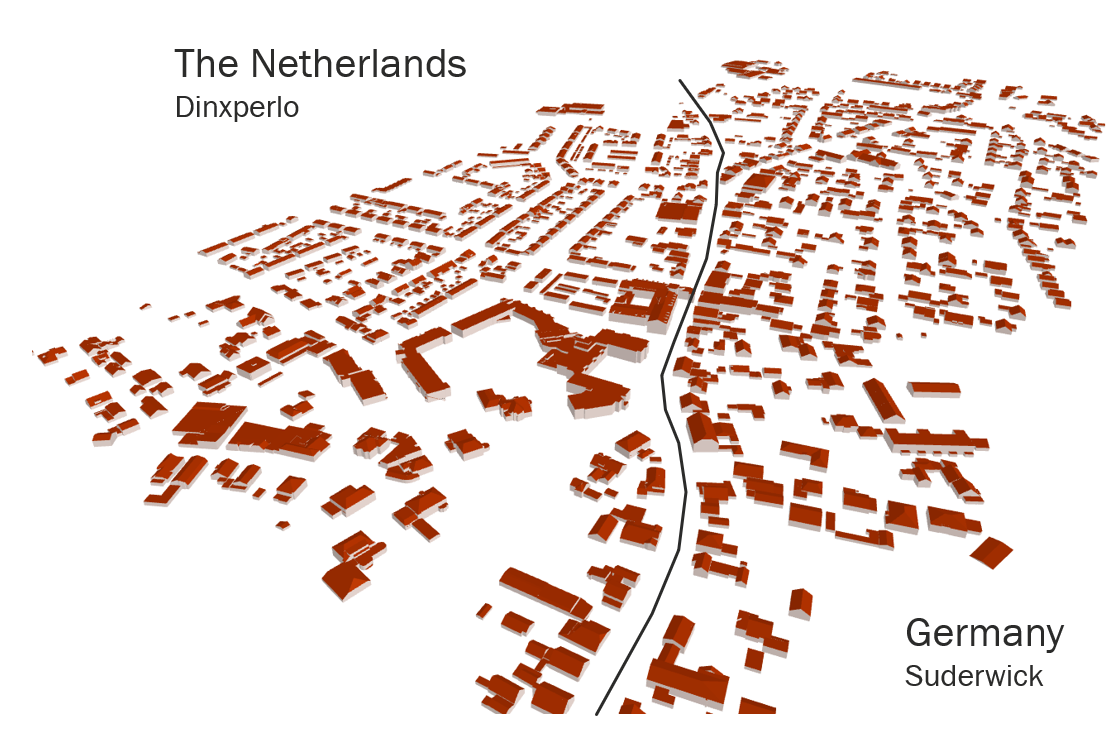The Location Europe platform combines various data sources and supports the development of location-based services.
For example, it contains data on buildings and average temperatures in five different countries. This platform will facilitate the testing and development of new data-based services and tools. Our goal is to expand the service with new datasets from other countries.
Three-dimensional data to support decision-making
One of the platform’s most interesting features is the possibility to view building data from different countries in 3D form.
– Visualised, three-dimensional data may be helpful for municipal decision-makers to perceive what a new building might look like or how it might affect its environment, for example. This way, it will be possible to design more functional, smarter cities, says NLS project manager Antti Jakobsson.
Location Europe combines data from different countries, which gives businesses the opportunity to scale up their services to the European market from the get-go. For example, they can review building data seamlessly across borders. Combining datasets is most useful in European countries with long, common borders with citizens that travel flexibly between both countries.
– The platform is an excellent tool for a situation in which you want to analyse your environment in a three-dimensional fashion. Let’s take a solar energy business – with this, they will be able to assess the buildings’ solar energy potential in different countries. If this data was available for all of Europe, this service could have enormous business potential, says Jakobsson.
The potential of the platform has already been identified, as the Finnish Innovation Fund Sitra highlighted it on their list of most interesting data economy solutions in late 2023.

Finnish geospatial data know-how for all of Europe
In addition to Finland, Estonia, the Netherlands, Norway and Spain have participated in the development of the platform. Its development started in the EU-funded GeoE3 project, which will end in February.
– During that collaboration, we were able to build a tool that combines large datasets in real time, in a format that is easier to understand than before. Nobody else in Europe had done this before. We are proud that it’s us Finns who are leading the way in developing more effective use of geospatial data in Europe, says Jakobsson.
Currently, the platform is under the stewardship of the NLS Geospatial Research Institute’s Location Innovation Hub. The Location Innovation Hub is a centre of excellence which helps companies develop their business using location data. The platform is available for companies to test.
It is possible for land survey and statistics agencies to offer their open data for inclusion in the platform, which will in turn strengthen the shared European data economy. Location Europe also supports European data spaces, which are currently under development. Data spaces also consider the safe distribution of data.
– The EU Regulation on High Value Datasets, which enters into force in June 2024, requires that all high value datasets that have been determined as such by EU member states – such as geospatial data – must be available free of charge through application interfaces. We will be able to help implement the Regulation, as these datasets can be exposed through the Location Europe platform, says Jakobsson.
Further information
Antti Jakobsson, Project Manager, firstname.lastname@nls.fi, +358 50 599 4123

